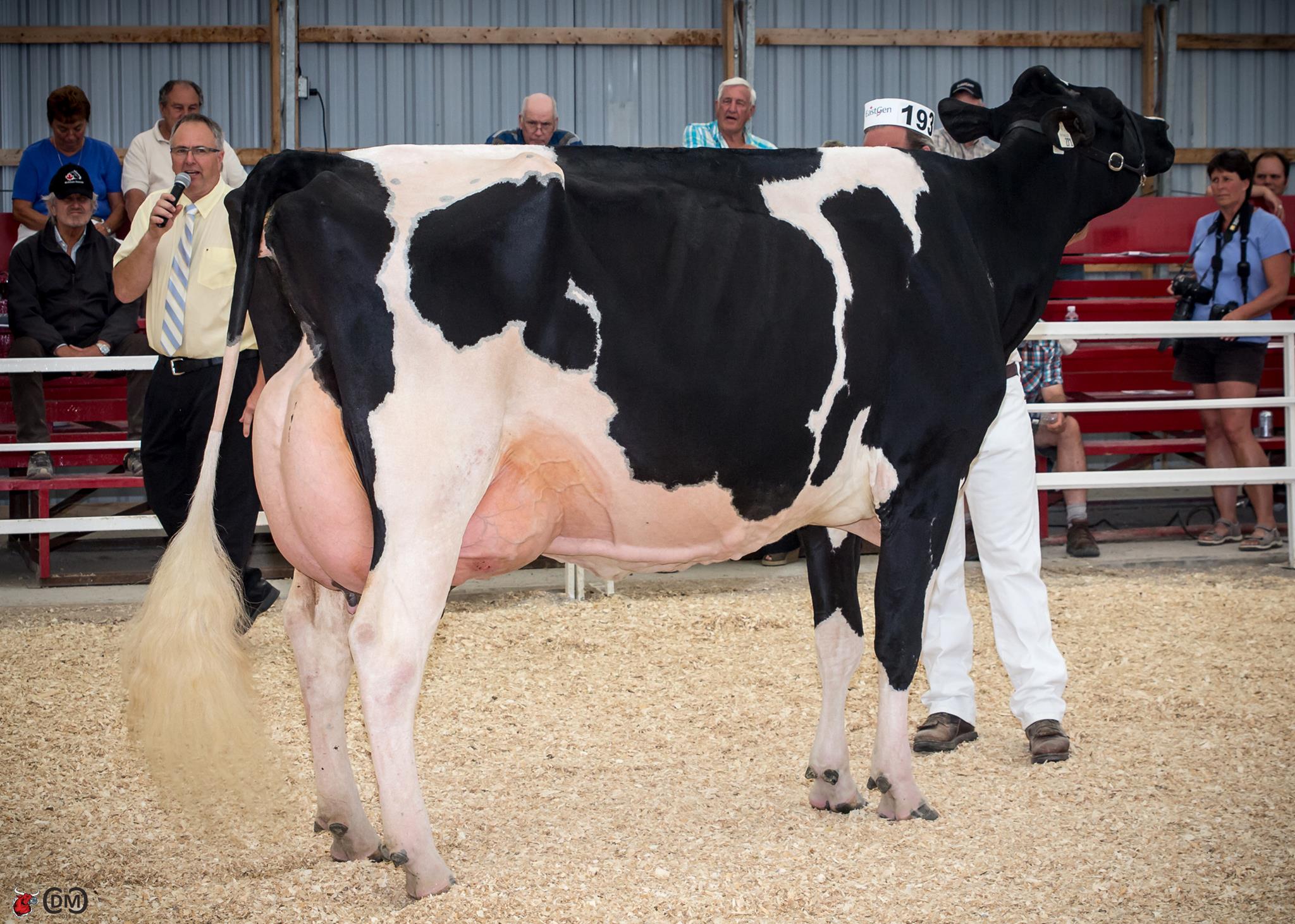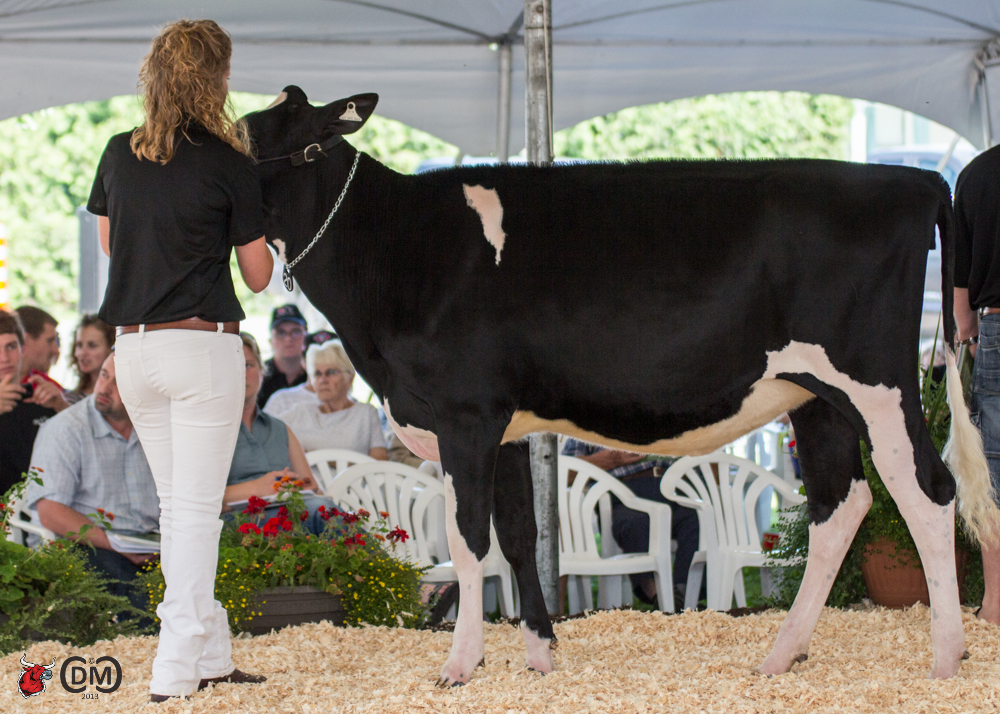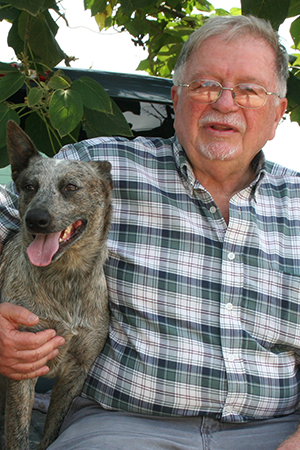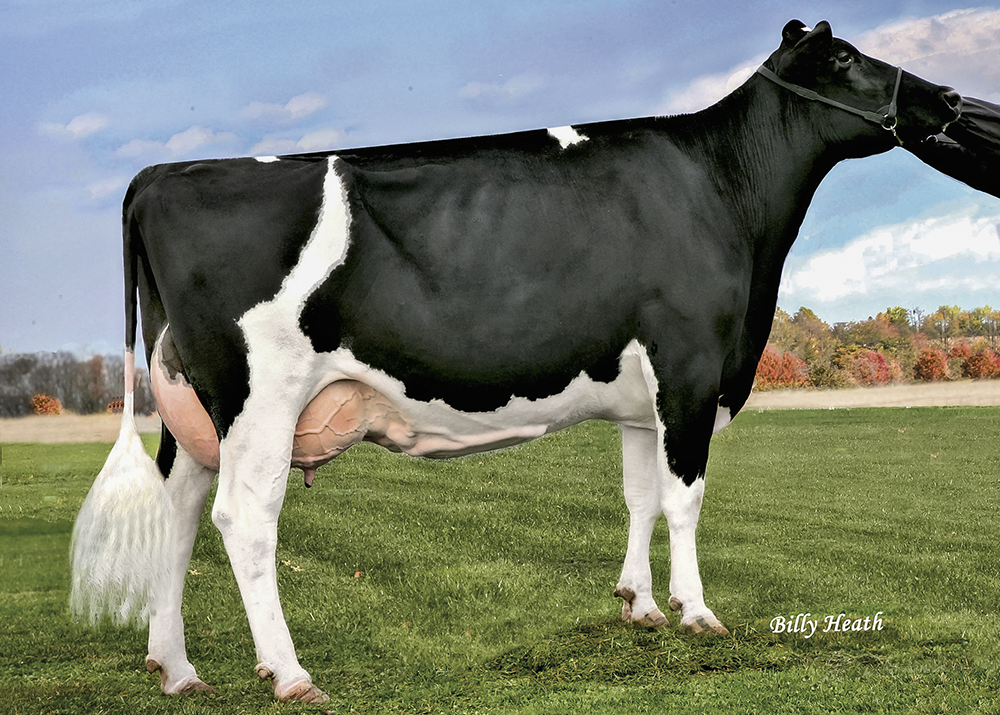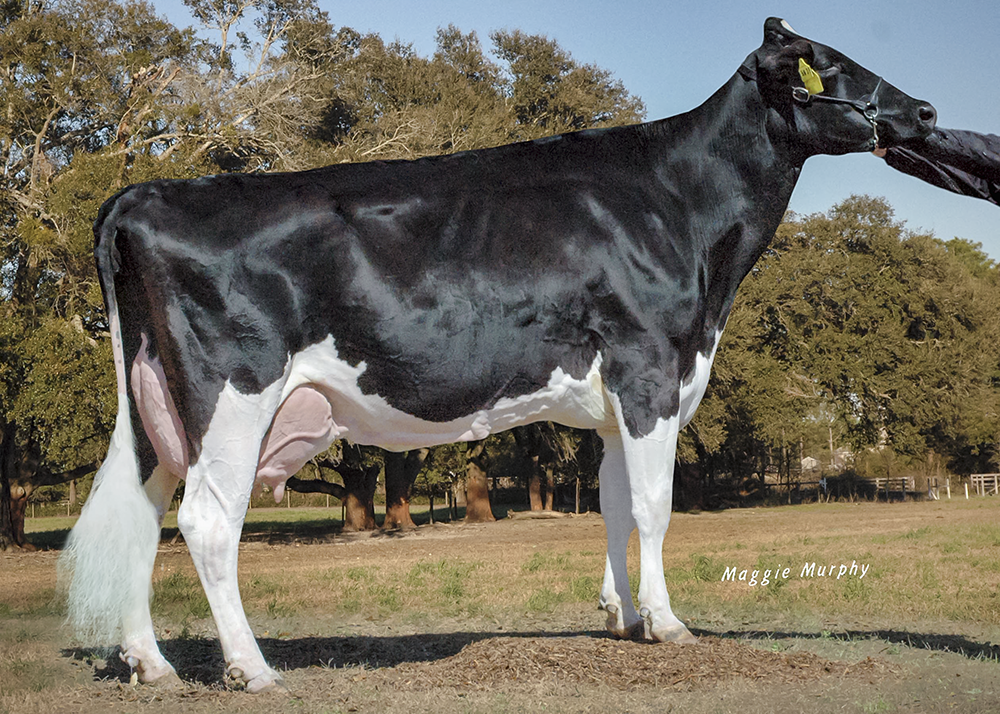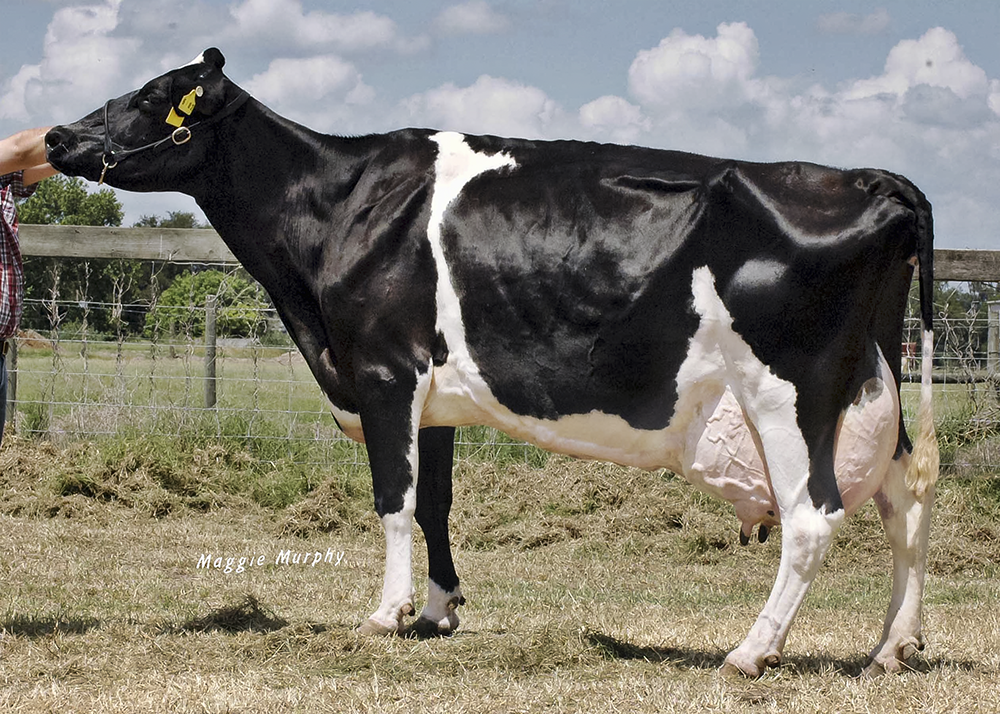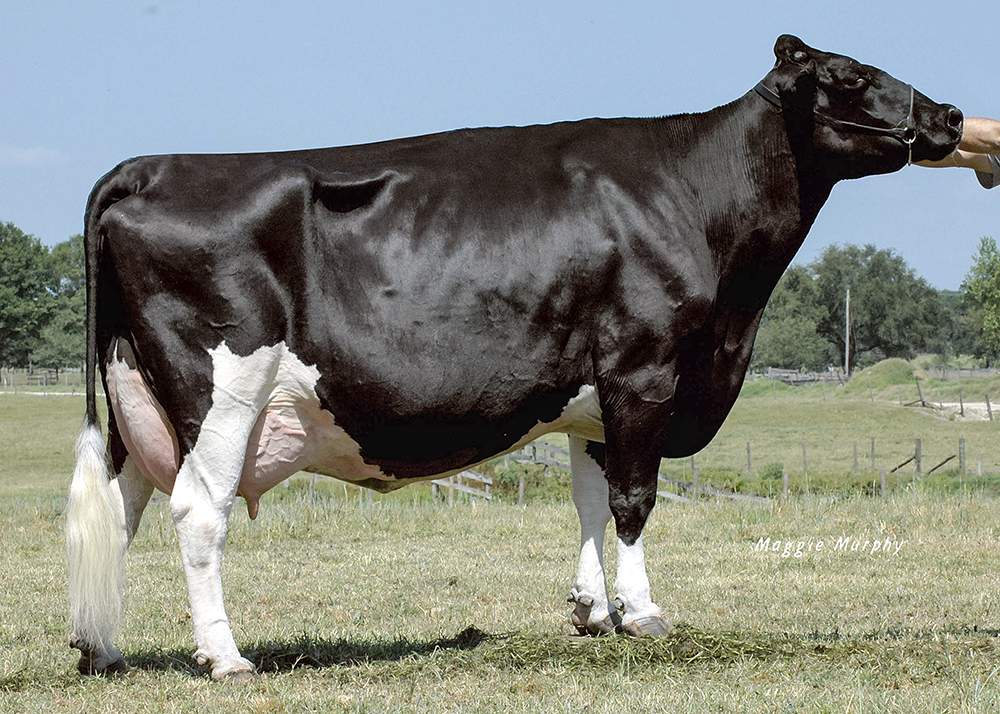If you were the coach of an NFL football team, would you select your players based solely on looking at them or would you want to see their performance statistics, in order to decide how to assemble the best team possible? That is the question that Don Bennink (Read more: NORTH FLORIDA HOLSTEINS. Aggressive, Progressive and Profitable!!) asked at the recent genomics conference. (Read more. Genetics in the Age of Genomics – Seminar Recordings and Recap) While it’s a pretty simple question, it may forever change the way you make your mating decisions.
For generations, we have all been taught to look at a cow the same way, and that’s the way we continue to teach the next generation to look at dairy cows today. But just because that is the way it has always been done, does not mean that we have been doing it correctly. We all start out learning the parts of the dairy cow and have learned the same way as we always have on how to evaluate cows. In fact, one major publication did seven editions in a row about how to evaluate cows, and each one presented the same way it’s been done for generations. It doesn’t seem to matter that evaluating type or conformation has been proven not to be the most accurate way to determine longevity (Read more: She ain’t pretty she just milks that way).
For years, it has been assumed that, if a cow had “high type” and lots of production, she was the perfect cow. But we all know that perfect cows don’t always exist (Read more: The Perfect Holstein Cow). Nevertheless, we have bred for these two key areas: high type and lots of production. We totally disregarded that we did not make substantial gains in profitability. And, furthermore, herd life actually decreased, even though we all bought into to the theory that a high type cow is a long lasting cow. Unfortunately, actual performance data shows that, as we bred for this the cows were actually lasting less time than before. In fact mortality rates increased; conception decreased and the number of lactations that most cows lasted decreased.
Through the years, the use of high production and low fertility bulls has actually decreased overall herd conception rates. Don points out that when he “first started milking cows, and AI was in it’s infancy, farmers up and down the road, had a 60% conception rate. Today people brag if they have a 30% conception rate.” Don also points out that in 1996, 93.4% of the calves that were born in the US lived, (i.e. a 6.4% stillborn rate). In 2002, the stillborn rate increased to 11% (i.e. 89% lived) and by 2007, 14% of the dairy calves died at birth. It’s only in more recent years that the industry has acknowledged this trend and has started to put more emphasis on conception and the significant impact it has on profitability. The reason for this is we put so much emphasis on a two-year-old production that we were killing reproduction. That is because cows that get back in calf regularly drop in production because they have to use some of their energy to support the development of their calves. So the sires that gave the maximum amount of milk were also the sires who had the lowest conception rates. We all know that a cow that is milking hard is the hardest cow to get back in calf. No matter what their conformation.
The thing is that we have the systems and technology to make the changes we need to make for the future. As Don points out, we don’t need to go to the 125-year old technology of type evaluation to solve this problem. Instead of having to use theory to predict longevity, we can actually measure productive life through the actual length in months that cows last in herds compared to their herd mates. We don’t need type evaluation to guess who will last longer; we have the actual information. We have the ability to see just which cows will last longer, not from trying to figure out what type trait links best to longevity. We have actual longevity data, SCS, fertility, conception, still births, etc.
We are all armchair quarterbacks. We are all willing to second guess the mating decisions of others after the fact. The challenge is that, with the technology we have available today, we don’t have to do as much second guessing as in the past. Tools like genomics and new performance data such as DPR, Still Birth Rate, and Productive Life tell us everything we need to make an informed decision. Don asks, “Can you just pick the perfect team by just looking at your players? Or would it help to know which players have drug issues, which ones will end up in jail, which ones will last a full season, and which quarterbacks can actually complete a pass, or know how many sacks your linebackers have made in the past. As a coach, you want all this data to choose your team. Well we are not coaches we are dairy farmers, and we make our money milking cows. Don’t you want that data on your animals? Or are you just going to keep looking at them and think that you can guess which ones could perform?”
In today’s day and age, we not only have traits that are more directly connected to longevity than type evaluation, we also have genomic testing that can more accurately predict what sires and cows will last longer. Every Tuesday we now receive genomic predictions on animals. We don’t need to wait till for a quarterly classification visit, that may or may not catch a cow on her best day, to evaluate what we think from looking at her is the probability that she will last more lactations. We can actually get much more accurate data at a younger age on how long she will stay in the herd.
The Bullvine Bottom Line
Sometimes it can be hard to change the way we have always played the game. When something has been done for generations, there will always be those who are resistant to change. However, the industry has changed and the amount of information available today to make mating decisions is light years ahead of what it was just a few years ago. The game is changing, and you need to change what you base your breeding decisions on. . The best coaches and quarterbacks make their decisions based on performance data, not on hypothesis. Genomics has helped take away the guessing game. We can now know at a very young age, what the genetic potential of that calf is. We can make better decisions faster. In the past art and practical knowledge was what drove mating decisions. However, today’s breeding world calls for a different approach. It takes a level of focus and commitment, and it’s a business. It is just like football, where the coaches now use all the information possible to decide what players to put on the field and how to use those players for the big game on Monday nights. Tools like genomics have changed the game forever.
Not sure what all this hype about genomics is all about?
Want to learn what it is and what it means to your breeding program?







